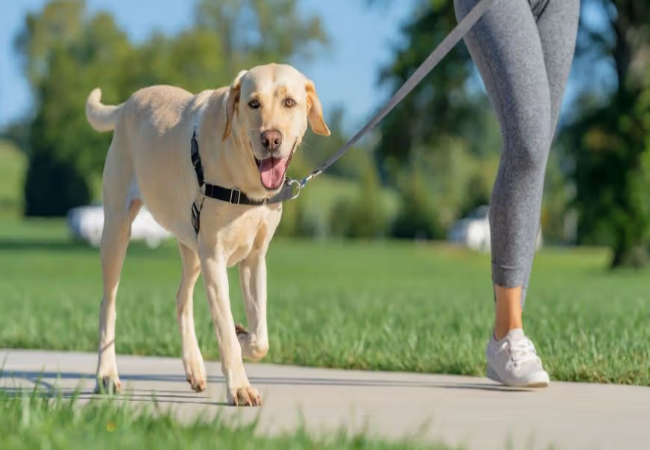Stop Your Dog from Pulling on the Leash 2025: Vet Training Guide 🐶✨

In this article
Stop Your Dog from Pulling on the Leash 2025: Vet Training Guide 🐶✨
By Dr. Duncan Houston BVSc
Walks should be fun—not a daily game of tug-of-war. If your dog pulls like a sled dog the second you step outside, don’t worry—you’re not alone, and it’s fixable.
I’m Dr. Duncan Houston, veterinarian and founder of Ask A Vet. Let’s walk through the real reasons dogs pull, why it’s a health risk, and how to train your dog to walk calmly by your side.
🚶♂️ Why Dogs Pull on the Leash
- They naturally walk faster than humans
- They’re excited by smells, sights, or other dogs
- They’ve learned that pulling gets them where they want faster
- They’re under-exercised or overstimulated
⚠️ Why Pulling Is a Problem
- Increases the risk of injury to your dog’s neck, trachea, or spine (especially with collars)
- Harder to control around roads, people, or other animals
- Causes frustration for both dog and owner—hurts your bond
✅ Tools to Help Stop Pulling
1. Front-Clip Harness
- Redirects your dog’s movement when they pull
- Designed to reduce pressure and support leash training
2. Short, Comfortable Leash
- A 1.2m–1.5m (4–5ft) leash gives control without tension
- Avoid retractable leashes during training
3. High-Value Treats or Toys
- Use rewards to reinforce calm walking and check-ins
🎯 Training Steps to Stop Leash Pulling
Step 1: Teach “Red Light, Green Light”
- If your dog pulls—STOP walking
- Only move forward when the leash is loose
- Consistency is key—every step matters
Step 2: Reward for “Check-Ins”
- Mark and reward every time your dog looks back at you
- Encourages attention and reinforces walking near you
Step 3: Change Direction Often
- Turn suddenly and walk the opposite way if they surge ahead
- Teaches your dog to stay focused on your movements
Step 4: Practice in Low-Distraction Environments
- Start indoors, then graduate to quiet streets before busy parks
🧠 What NOT to Do
- Don’t jerk or yank the leash
- Don’t use choke or prong collars—they can cause pain and worsen behavior
- Don’t let pulling “sometimes” work—be consistent!
🐾 Realistic Expectations
- Puppies and high-energy breeds may need weeks of practice
- Practice in short sessions daily (5–15 minutes is enough)
🔗 Support from Ask A Vet
- Ask A Vet – Chat with a vet about leash-pulling, training tools, or behavior challenges
📋 Summary Excerpt
Leash pulling is one of the most common (and fixable) dog behavior problems. A vet explains why it happens and gives a step-by-step guide to better walks.
❓ FAQs
-
Q: Is it better to use a collar or a harness for pulling?
A: A front-clip harness is safer and more effective. Collars can cause neck damage when dogs pull. -
Q: How long does it take to stop leash pulling?
A: With consistency, most dogs improve in 2–4 weeks. High-energy dogs may take longer. -
Q: Should I hire a trainer?
A: If your dog is reactive or difficult to control, a force-free trainer can speed up results and help keep walks safe.






